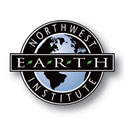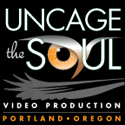Food Solutions Start With Community
A third of our seafood.
That’s what the reports are saying: that the Gulf supplies a third of our county’s seafood.
Walking the streets down there, every restaurant, every street food cart, every cafe, signs read, “Gulf shrimp,” “Mississippi Seafood Gumbo,” “Louisiana Catfish,” and so on. In a region surrounded by marshland, it’s not farms and windmills and grain silos that you see. It is the fishing boats and seafood processing plants that catch your eye.
This is the region’s food source. It is the industry that many men and women make their livelihood from. But what else is a high source of income for Gulf residents? What else catches your eye on the horizon? Oil rigs.
What a contradiction.
We’re extracting highly toxic substances in the very waters that the Gulf Coast, and the rest of the nation for that matter, rely on for food.
What happens when something goes wrong out there? Male blue crabs off the shores of Louisiana are significantly smaller, while females are scarce all together. When cracked open, small crabs actually have oil between their bodies and their shells. Shrimp hold the oil in their skin, and the oysters out on the reefs are destroyed. Dead. Throw a little Corexit 9500 into the mix, and you’ve got coastlines closed to fishing. Fisherman are scared to sell the product, and people fear eating it. Is there a citation for this?
So what’s left to eat if the local food source is contaminated? Well the options consisted of deep fried meals with salads that lacked color and diversity. Don’t get me wrong – I am a glutton for french fries, but after 10 days, I started feeling the repercussions.
After the official PDX 2 Gulf Coast trip, I had a few days of solitude in New Orleans, and I spent them meandering in thought, street by street. I was doing a lot of thinking about what I had experienced on the Gulf Coast during the week prior, trying to wrap my mind around the seafood coming out of the region, and the effects that the dispersants were having on the ecosystem. I was also taking into account the history of the coastline. My thoughts wandered from the trenches for pipelines dredged up in the 50s and 60s that have forever damaged the marshland, to the dead zones created by pesticides and fertilizer flowing down the Mississippi.
Is nature resilient enough to fix this?
My thoughts came back to the topic of food. A broken system means importing seafood and produce from far off places, which would result in using more of what got us to this point: oil. How can we talk about initiating some sort of local food movement in the region when their source is damaged? On top of that, how do we shift thinking when the alternatives (imported seafood) are much less expensive? I had started mapping out in my head the type of educational outreach center I would create in the area that would teach people the importance of growing food locally, as well as the benefits to a balanced and nutritious diet. Local and organic produce would be affordable for those who needed it most, and obesity and diabetes would be a thing of the past. Basically, my lofty dream was to change the Gulf Coast food scene to what I experience in Portland.
No sooner than I finished my business plan and created my fictitious Board of Directors, I happened upon an “eco-center” right smack-dab in the middle of the Lower Ninth Ward. There was a huge, fruitful garden and a compost pile that was easily two stories tall. They were doing everything that I had wanted my dream-like organization to do, and they were doing it in the most impoverished area of the city. After talking with a few people, I learned about a project that NOLA Green Roots has created called the Ninth Ward Community Garden, which will be place for locals to learn more about gardening, the nutritional benefits, and why it is important to protect our soil.
And it didn’t stop there. I found a copy of Edible New Orleans, and read about a co-operative grocery store that is coming to Marigny/Bywater neighborhood, another area of town that will greatly benefit from fresh produce. It will be in operation early next year. This got me out of my dream-like state, and I asked around a bit. Apparently there are numerous farmers markets going on around the city. I had just missed one in fact.
Yes – there are still many problems with the food scene that need to be solved. It is not sustainable to be extracting highly toxic substances in the same place where we get our seafood. Nor is it sustainable to be using that oil to import and export food. But I found hope and inspiration in what IS being done to solve the problem of food sourcing, and it is starting at the community level. Ground up.
Where there is darkness, a small light is beginning to flicker.
By Sarah Menzies, Northwest Earth Institute
























NO COMMENT
Leave a comment